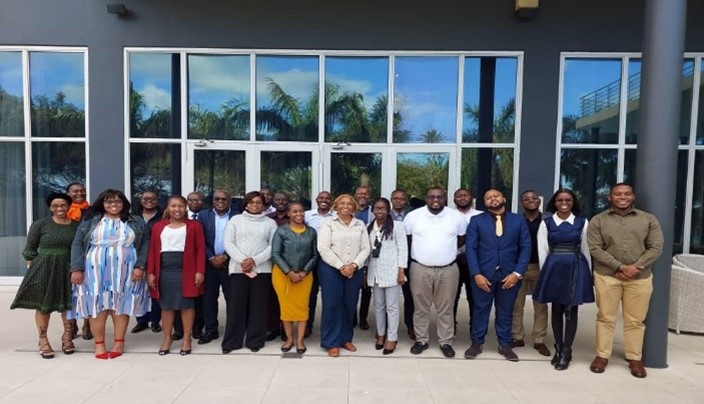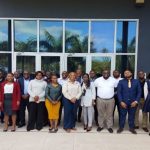In line with its objective of facilitating capacity development, the ESAWAS Regulators Association organized two technical trainings in Key Performance Indicators (KPIs) and Sanitation Safety Planning (SSP) for its members.
These 2-day back-to-back trainings took place from 28th to 31st August 2023 and were supported with trainers from World Bank-IBNET, WHO-RegNet and ESAWAS. The main objective was to equip the participants.
- with in-depth know-how in monitoring and analysing service providers’ performance through well defined KPIs, as well as,
- to assist water and sanitation utilities in the implementation of local level risk assessment and management of the sanitation service chain through SSP.
The training on KPIs emphasized the purpose of benchmarking as key regulatory tool for assessing and encouraging improvement in performance of WSS Utilities. Benchmarking allows a service provider to evaluate its performance and compare it against the performance of other service providers and against the industry good practices and standards. Through benchmarking, sector improvements and best performers are recognised and challenges are identified for regulatory and government action. It also gives visibility to development partners and sector actors for interventions required.
The training further discussed the KPIs used for benchmarking service providers’ performance focusing on their definition, calculation and data requirements as well as performance benchmarks used at regional level. The indicators covered included: quality of service indicators namely, service coverage, sanitation coverage, water quality and hours of supply; economic efficiency indicators namely, O&M cost coverage, collection efficiency and staff cost as a proportion of O&M cost and operational sustainability indicators which include the number of staff per 1,000 water & sewer connections, Non-Revenue Water and metering ratio.

Participants were also introduced to the NewIBNET platform designed by World Bank to help water utilities track and manage their operations. It allows utilities to share data and compare their performance against other utilities’ reported data, perform self-assessment in management practices and learn from other utilities. As regulators, participants were called to encourage utilities in their respective countries to join and use the NewIBNET.
The SSP training provided understanding of Sanitation Safety Planning as a systematic approach recommended by WHO to identify, assess and manage the risks associated with sanitation systems along the entire service chain with the ultimate goal of maximizing health benefits of sanitation interventions. Specifically, the training explained the methodology and key steps of Sanitation Safety Planning, sanitary inspections for sanitation systems and the requirements for successful implementation of SSP.
Participants were able to analyse the sanitation systems (sewered and non-sewered), identify potential risks, exposure groups and transmission pathways, prioritize risks and propose measures to control the risks. Implementation of SSP requires the involvement of different stakeholders therefore, the training provided insights on who should be brought on board and through marketplace exercise, participants learned how to communicate about SSP to different target audiences.
Each training was attended by 23 participants among which 8 females, from mid-level management of the 12 members of ESAWAS.






